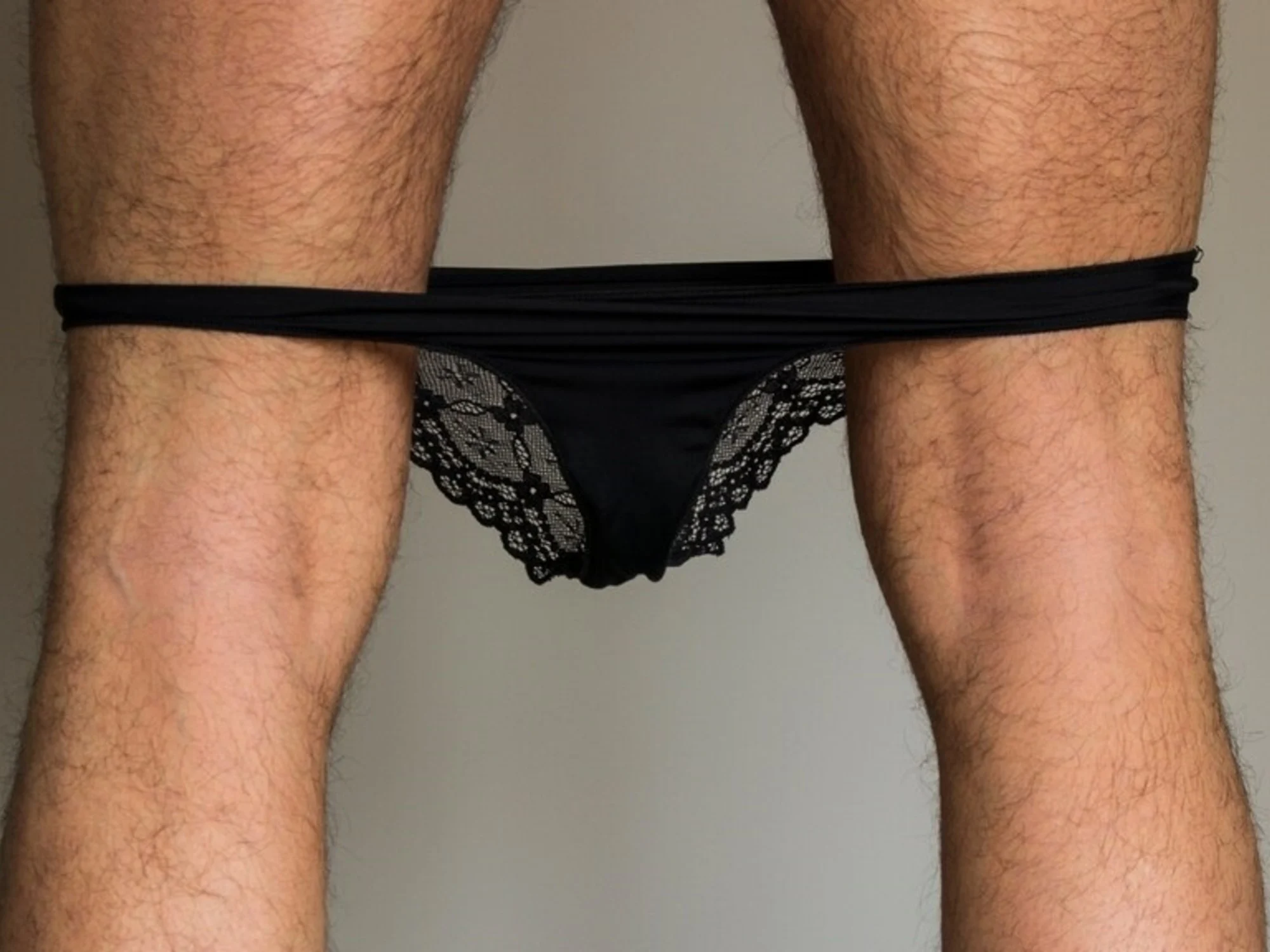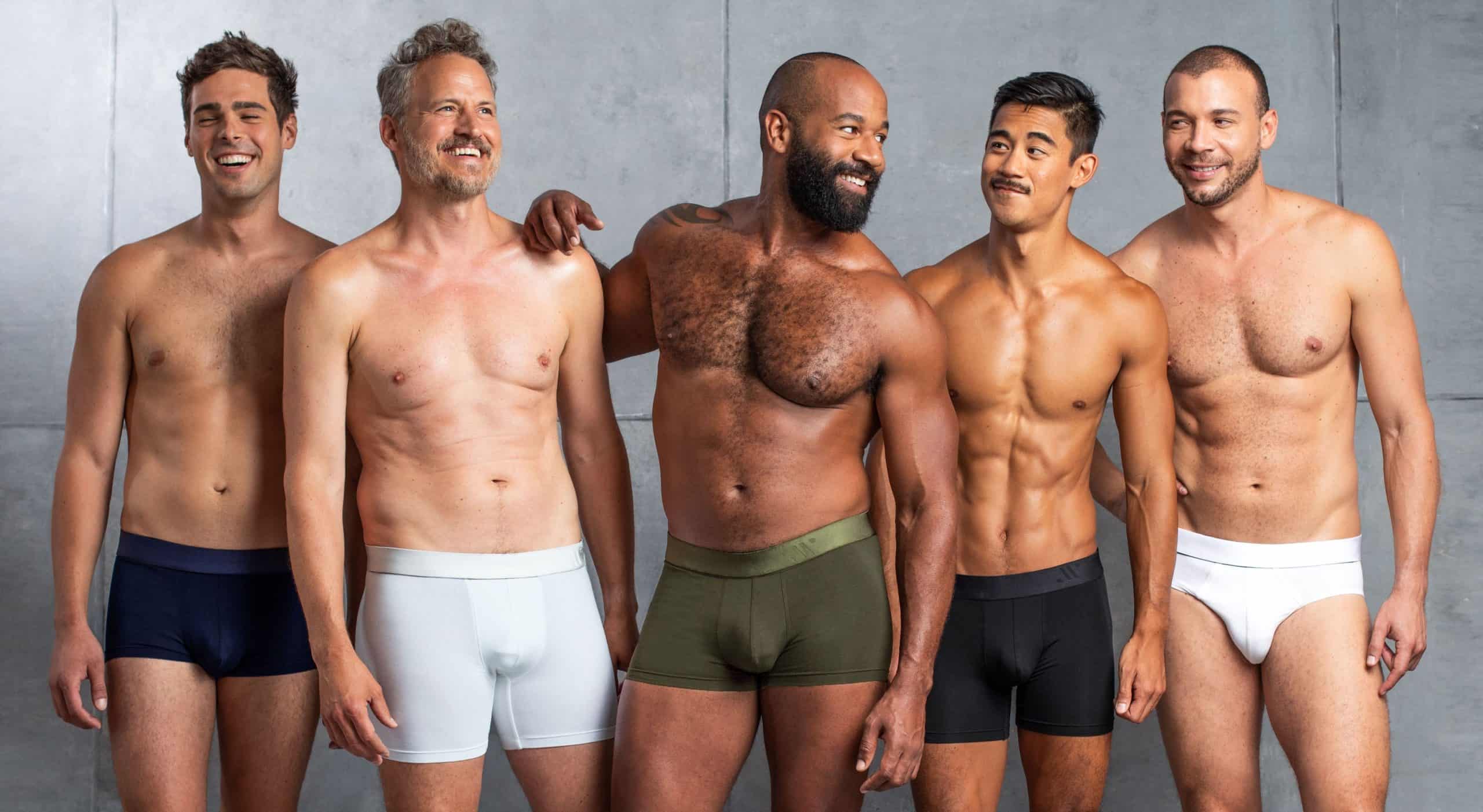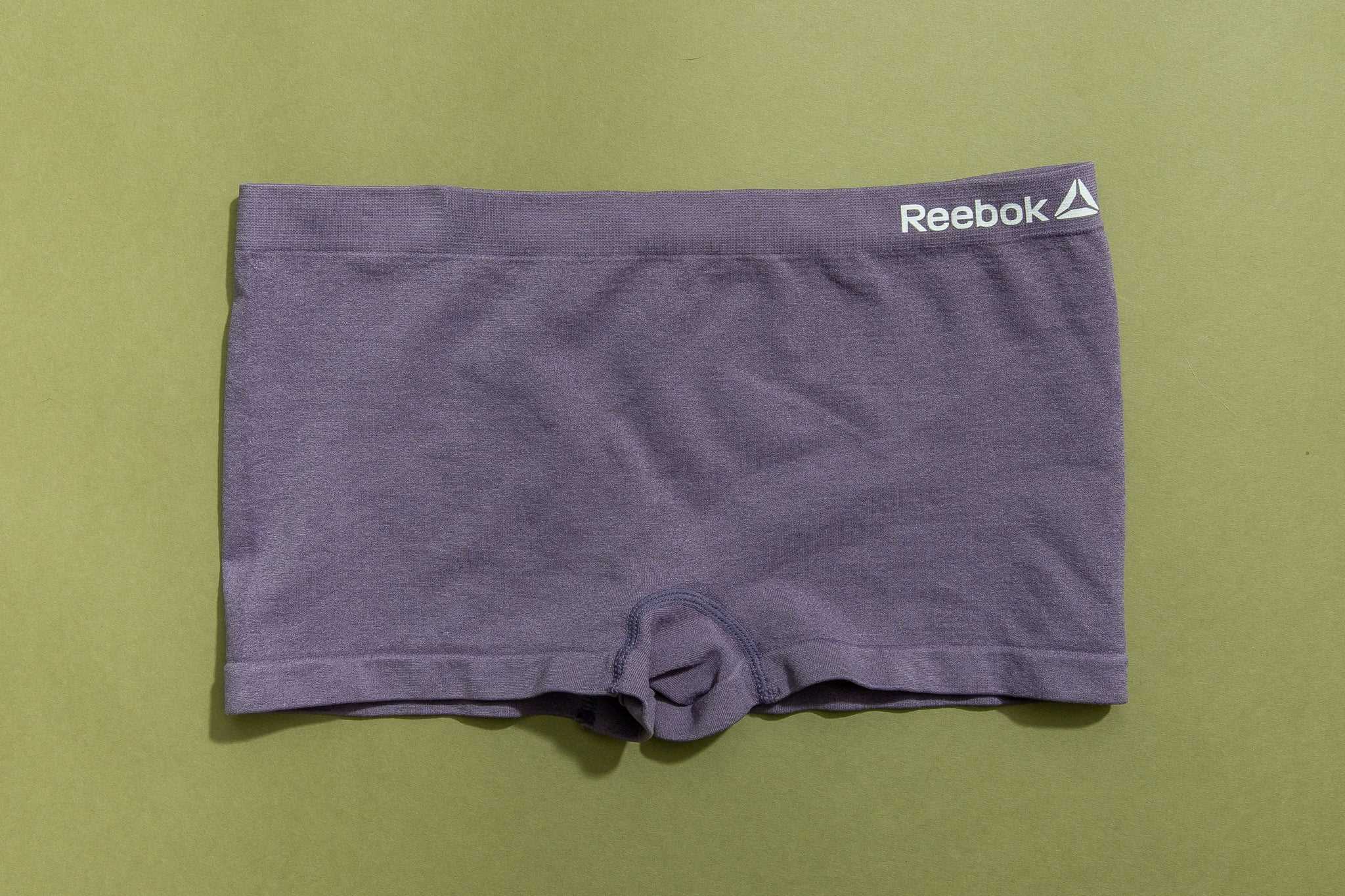

FAQs
Why Do Women Not Wear Underwear
Modified: September 23, 2023
Discover the reasons why some women choose not to wear underwear and find answers to other general questions about this topic. Explore the preferences and comfort levels of different individuals.
(Many of the links in this article redirect to a specific reviewed product. Your purchase of these products through affiliate links helps to generate commission for Under-tec.com, at no extra cost. Learn more)
Table of Contents
Introduction
The choice of whether or not to wear underwear is a personal one that many people may have strong opinions about. While it is commonly assumed that women always wear underwear, there is a growing trend of women opting to go without. This decision can be influenced by a variety of factors, including comfort, health benefits, cultural and societal norms, and personal preferences. This article will delve into the reasons why some women choose not to wear underwear, exploring both historical and contemporary perspectives.
There is a long history of women going without underwear, with cultural, societal, and practical reasons contributing to this choice. In ancient civilizations such as Greece and Rome, women did not wear undergarments as we know them today. They relied on draped clothing and togas that provided sufficient coverage without the need for additional layers. Similarly, during the medieval period, undergarments were not commonly worn by women. It was not until the 19th century that the modern concept of underwear began to emerge.
Fast forward to the present day, and some women have found that going without underwear offers a range of benefits. One of the primary reasons is increased comfort. Traditional underwear can often be restrictive, with tight elastics, uncomfortable fabrics, and constraining designs. By forgoing underwear, women can experience greater freedom of movement and avoid the discomfort associated with ill-fitting undergarments.
Moreover, not wearing underwear can have certain health benefits. The intimate area is delicate and can be prone to infections and irritation. Tight underwear can create a warm and moist environment, leading to an increased risk of bacterial and yeast infections. Going commando allows for better airflow and can help maintain a more balanced and healthy environment for the skin.
Cultural and societal norms also play a role in women’s choices regarding underwear. In some cultures, traditional attire or religious customs may not include the use of underwear. For these women, not wearing underwear is a way to honor their cultural heritage and adhere to their beliefs. Additionally, societal trends and fashion influences can impact underwear choices. Over the years, we have seen the emergence of low-rise jeans and body-hugging dresses that may require the absence of visible panty lines, leading some women to opt for no underwear.
Ultimately, the decision to wear or not wear underwear is a personal one, and women should be free to choose what makes them feel comfortable and confident. It is important to respect individual preferences and not judge others based on their choices regarding undergarments. Understanding the various factors that influence these decisions can help foster a more inclusive and accepting society.
In the following sections, we will explore the historical reasons for not wearing underwear, delve deeper into the comfort and health benefits, examine the cultural and societal factors at play, and discuss the importance of personal preferences and freedom of choice.
Historical reasons for not wearing underwear
The decision to not wear underwear is not a new phenomenon, but rather one that has existed throughout history. In ancient civilizations such as Greece, Rome, and Egypt, women did not wear undergarments as we know them today. Instead, they relied on draped clothing and togas that provided sufficient coverage without the need for additional layers.
During the medieval period, undergarments were also not commonly worn by women. Women’s clothing consisted of multiple layers, including chemises, dresses, and cloaks, which offered enough coverage and protection. The idea of wearing undergarments only emerged gradually in the 19th century with changes in fashion and advancements in textile manufacturing.
One reason for the absence of underwear in historical contexts was the practicality and simplicity of clothing. Women’s attire during these periods favored loose-fitting and flowing garments. The lack of undergarments allowed for easier movement and provided a more breathable and comfortable experience.
Furthermore, the concept of modesty varied across cultures and time periods, influencing the necessity of undergarments. In some societies, the shape of the body was not considered taboo or sexualized, and therefore, the need for underwear as a means of concealing or shaping the body was not prevalent.
Additionally, the absence of undergarments in historical fashion was also influenced by the socio-economic status of women. It was mainly the wealthy upper class who could afford luxurious and elaborate clothing, which often included inner layers of undergarments. The lower-class women, on the other hand, had more practical clothing that did not require additional layers.
It is interesting to note that even in more recent history, the popularity of not wearing underwear has resurfaced during times of social change and rebellion against conventional norms. In the 1960s, when the feminist movement gained momentum, some women chose to reject traditional undergarments as a statement of liberation from societal expectations.
Today, the historical reasons for not wearing underwear continue to influence women’s choices. The desire for comfort, freedom of movement, and a return to a simpler and more natural state of being are factors that harken back to the historical roots of going commando.
In the following sections, we will explore the comfort and health benefits of not wearing underwear, delve into the cultural and societal factors that influence underwear choices, and discuss the importance of personal preferences and freedom of choice in deciding whether to wear underwear or not.
Comfort and health benefits of not wearing underwear
One of the main reasons women choose not to wear underwear is the increased comfort it provides. Traditional underwear can often be restrictive, with tight elastics, uncomfortable fabrics, and constraining designs. By going commando, women experience greater freedom of movement and avoid the discomfort associated with ill-fitting undergarments.
Not wearing underwear can also have significant health benefits. The intimate area is delicate and can be prone to infections and irritation. Tight underwear can create a warm and moist environment, leading to an increased risk of bacterial and yeast infections. Going without underwear allows for better airflow and can help maintain a more balanced and healthy environment for the skin.
Furthermore, not wearing underwear can minimize the risk of developing certain skin conditions. The friction caused by underwear can lead to chafing, irritation, and even skin allergies. By eliminating these potential irritants, women can reduce the chances of experiencing skin-related issues in the intimate area.
Comfort and health benefits are particularly evident during physical activities. Whether engaging in exercise, yoga, or other forms of physical exertion, going commando can provide greater comfort, flexibility, and breathability. Without the constricting layers of underwear, women can move freely and avoid unnecessary discomfort.
Moreover, not wearing underwear can contribute to increased body confidence and self-acceptance. Embracing one’s body in its natural state can foster a positive body image and promote a sense of self-empowerment. Women who choose to forgo underwear often report feeling more comfortable and connected with their bodies.
It’s important to note that not wearing underwear does not mean neglecting personal hygiene. Proper hygiene practices, such as regular washing and maintaining cleanliness, should still be observed to ensure the overall health and well-being of the intimate area.
While there are clear comfort and health benefits to not wearing underwear, it is important to acknowledge that individual experiences may vary. Some women may find comfort and preference in wearing specific types of underwear that suit their needs and lifestyle. Ultimately, the choice of whether to wear underwear or not should be based on personal comfort, preference, and understanding of one’s own body.
In the following sections, we will explore the cultural and societal factors that influence underwear choices, as well as the importance of personal preferences and freedom of choice in deciding whether to wear underwear or not.
Cultural and societal factors influencing underwear choices
Underwear choices are not solely based on personal preference but are also influenced by cultural and societal factors. Different cultures and societies have varying norms and expectations when it comes to underwear, shaping the choices women make.
In some cultures, traditional attire or religious customs may not include the use of underwear. These cultural practices and beliefs play a significant role in influencing women’s decisions. For example, in certain African tribes, women wear clothing that does not require underwear, such as loose-fitting garments or wraps. For them, going without underwear is a way to honor their cultural heritage and adhere to long-standing traditions.
Societal trends and fashion also heavily influence underwear choices. Over the years, we have witnessed shifts in fashion and clothing styles that have impacted the type of underwear women choose to wear. The emergence of low-rise jeans and body-hugging dresses, for example, has led to an increased demand for seamless and no-show underwear to avoid visible panty lines. Societal pressure to conform to certain beauty standards and fashion trends can influence women’s decisions to wear specific types of underwear.
Moreover, media and advertising play a significant role in shaping societal perceptions of what underwear should look like and what is considered attractive or desirable. Advertising campaigns often feature photoshopped and idealized images of women, promoting a certain body type and reinforcing the notion that specific types of underwear are essential for attractiveness. These messages can impact women’s choices and make them feel compelled to conform to these societal ideals.
Cultural and societal factors may also influence the perception of wearing or not wearing underwear as an expression of sexuality. In some societies, the act of not wearing underwear may be seen as provocative or inappropriate, while in others, it is considered a personal choice and a symbol of liberation and empowerment. These cultural and societal norms can create pressure or stigmas surrounding the decision to go without underwear.
It is important to recognize that underwear choices are deeply personal and can vary greatly from individual to individual. Cultural and societal factors should not dictate or impose expectations on women’s choices, as every woman should have the freedom to make decisions based on her personal comfort, beliefs, and preferences.
In the next section, we will discuss the importance of personal preferences and freedom of choice when it comes to deciding whether to wear underwear or not.
Personal preferences and freedom of choice
When it comes to the decision of whether to wear underwear or not, personal preferences and freedom of choice are of utmost importance. Every woman should have the agency to choose what makes her feel comfortable and confident in her body.
Underwear is a personal garment that is worn closest to the skin, and therefore, it should be a reflection of an individual’s taste and preferences. Some women may prefer the support and coverage that underwear provides, while others may find it constricting or uncomfortable. Personal comfort is subjective, and what works for one person may not work for another.
Freedom of choice is essential in breaking free from societal expectations and norms. Women should not feel pressured to conform to a specific underwear style or to wear underwear at all. It is crucial to embrace the idea that each person is unique and has the right to make decisions about their bodies without judgment or stigma.
Choice extends beyond the decision to wear underwear or not. It also includes the freedom to choose the type of underwear that aligns with one’s lifestyle, body shape, and personal preferences. Whether it’s thongs, briefs, boyshorts, or none at all, every woman should have the autonomy to select what makes her feel comfortable and confident.
Furthermore, personal hygiene practices should not be compromised regardless of one’s choice regarding underwear. Maintaining cleanliness, practicing good hygiene habits, and taking care of one’s intimate area are essential, regardless of what type of underwear is worn or not worn.
It is crucial to create a culture of acceptance and support for women’s choices regarding underwear. Underwear should not be a source of judgment, shame, or pressure. By fostering an environment that values and respects diverse preferences, we can empower women to embrace their bodies and make decisions that align with their personal comfort and well-being.
In summary, personal preferences and freedom of choice should be at the forefront when considering whether to wear underwear or not. Each woman should have the autonomy to decide what makes her feel comfortable, confident, and in control of her own body. By embracing and celebrating diversity in underwear choices, we can create a more inclusive and accepting society.
As we conclude this article, it is important to remember that the decision to wear or not wear underwear is ultimately a personal one. It is essential to respect and support every woman’s choice, allowing them to embrace their bodies and make decisions that best suit their individual needs and preferences.
Conclusion
The choice of whether or not to wear underwear is a deeply personal decision for women. It is influenced by a variety of factors, including comfort, health benefits, cultural and societal norms, and personal preferences. Throughout history, women have both worn and gone without underwear, with practicality, cultural practices, and societal trends shaping these choices.
Not wearing underwear offers comfort and potential health benefits, such as increased freedom of movement, better airflow, and a reduced risk of infections and irritation. Cultural and societal factors can also play a significant role in underwear choices, with traditions, fashion trends, and media influencing women’s decisions.
However, the importance of personal preferences and freedom of choice cannot be overstated. Each woman should have the freedom to choose what makes her feel comfortable, confident, and connected with her body. Underwear choices should not be dictated by societal expectations or judgments. Instead, they should reflect individual tastes and preferences.
Respecting and embracing diverse underwear choices is essential in creating an inclusive and accepting society. It allows women to celebrate their bodies and make decisions that best suit their unique needs and lifestyle. Personal preferences should be celebrated, and women should be empowered to make choices that align with their comfort, confidence, and well-being.
In conclusion, the decision to wear or not wear underwear is a personal one, influenced by a multitude of factors. By understanding and respecting the reasons behind these choices, we can foster an environment of empowerment and acceptance. Let us celebrate the freedom to choose and support every woman in embracing her own unique path when it comes to underwear.










